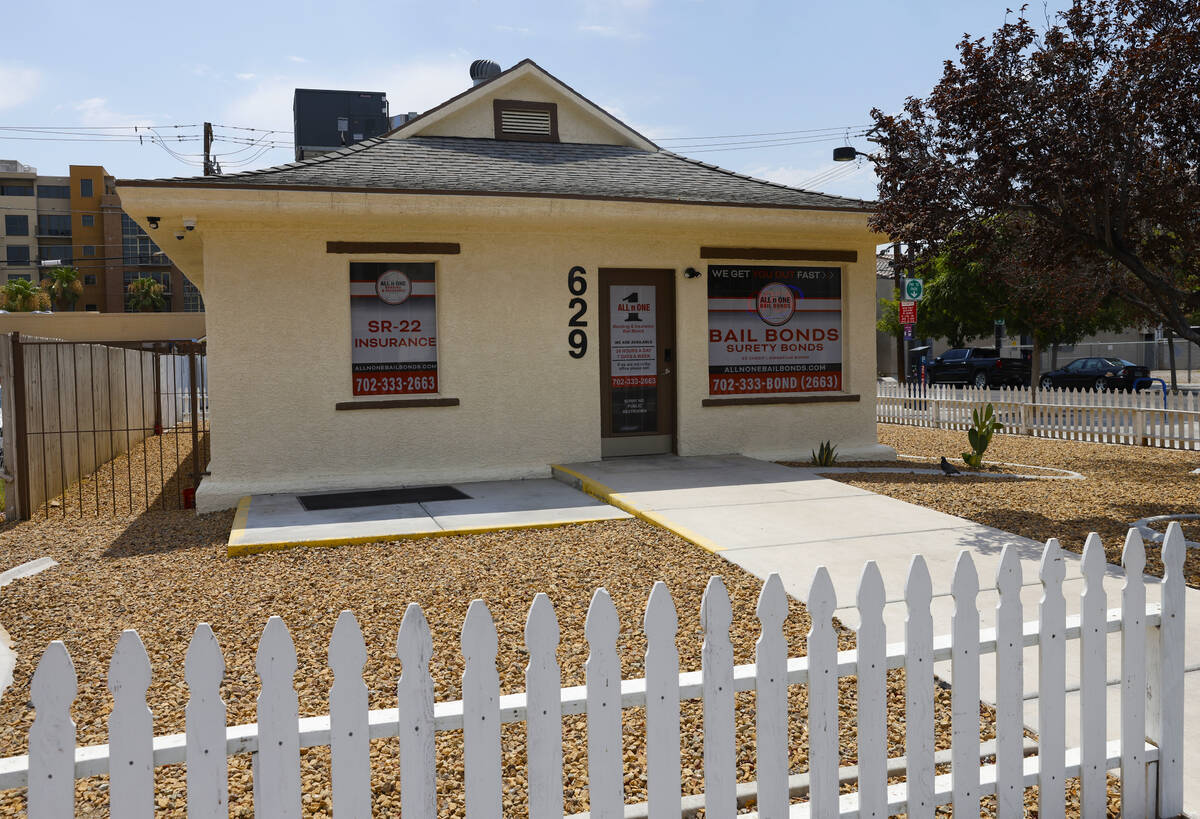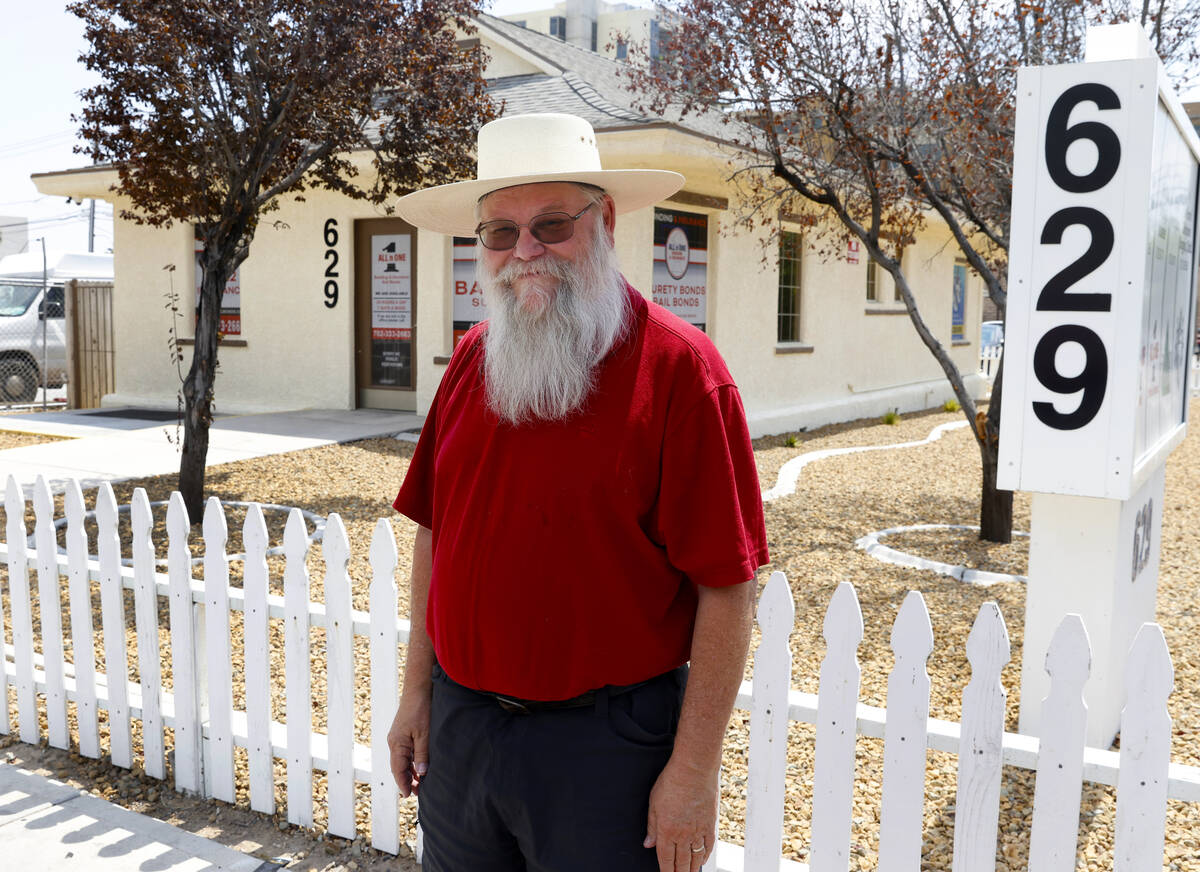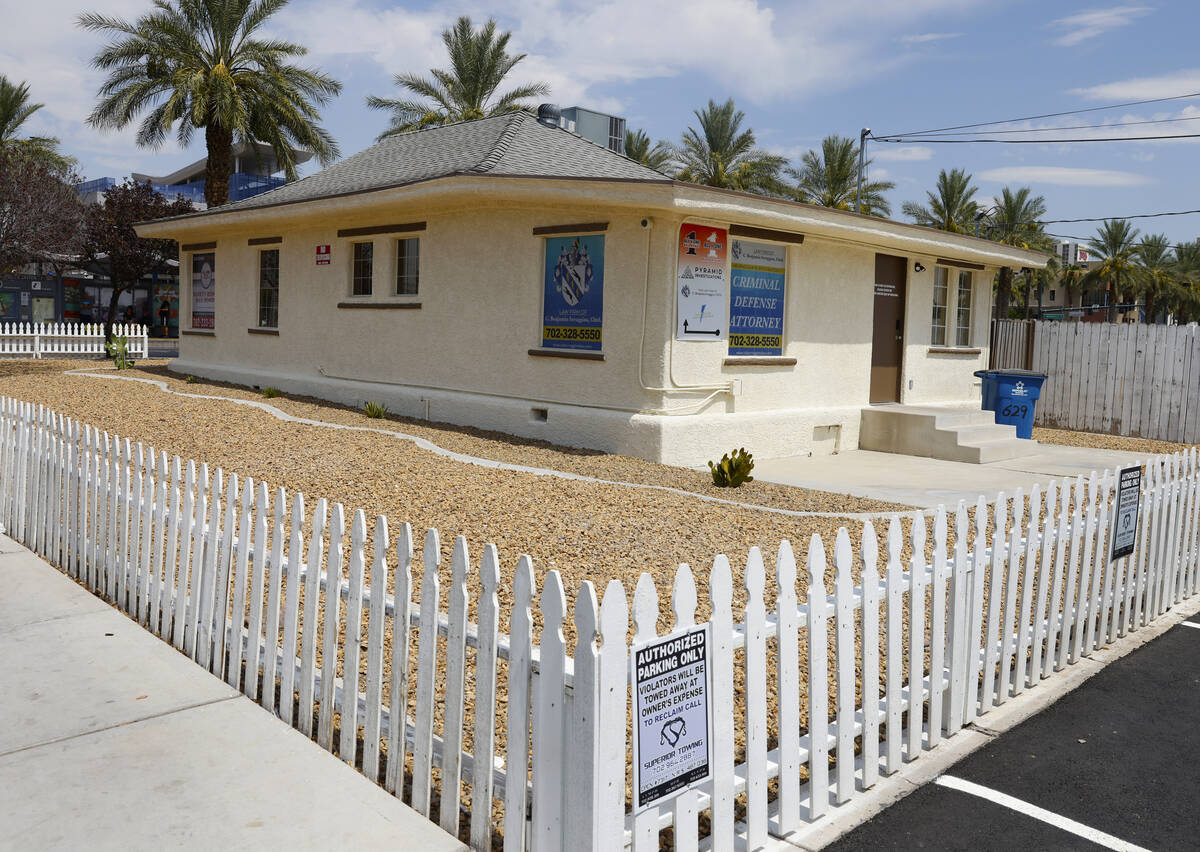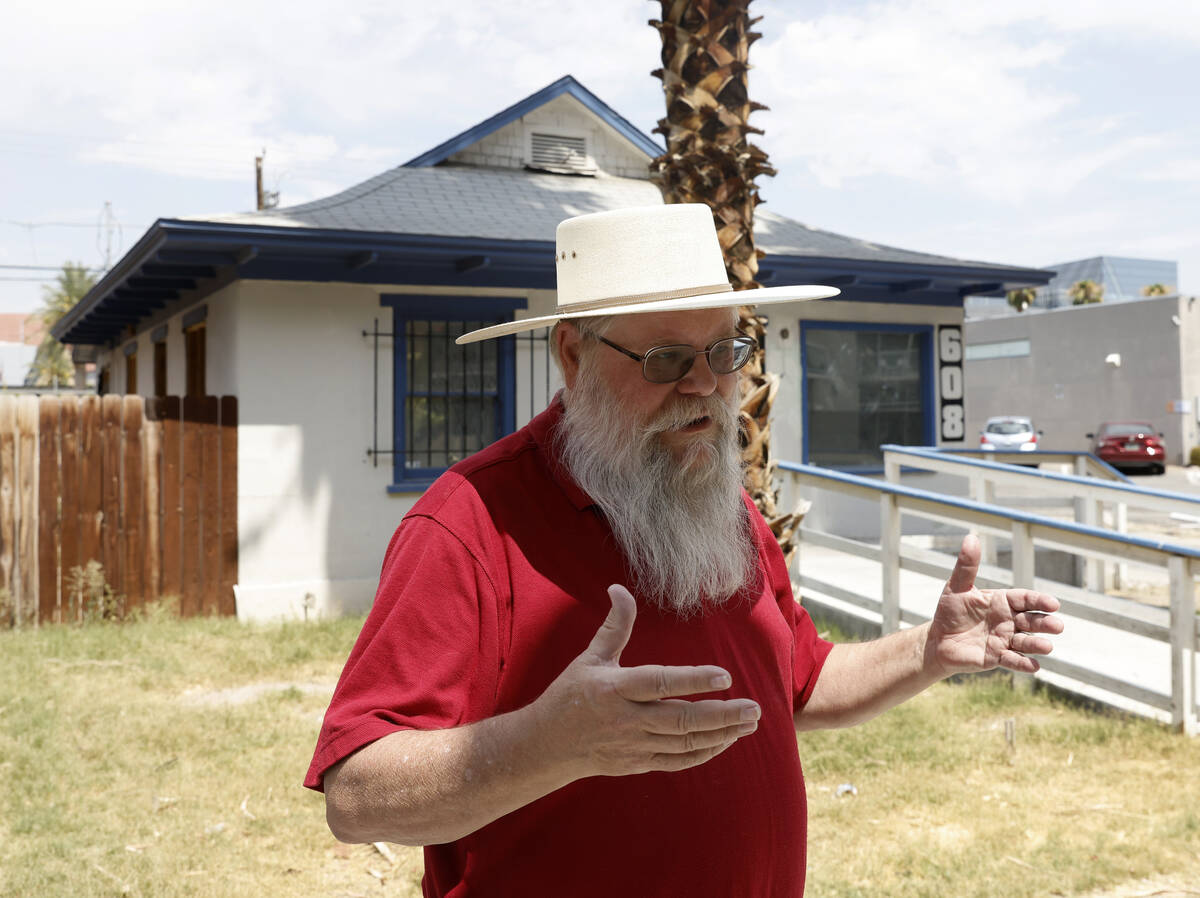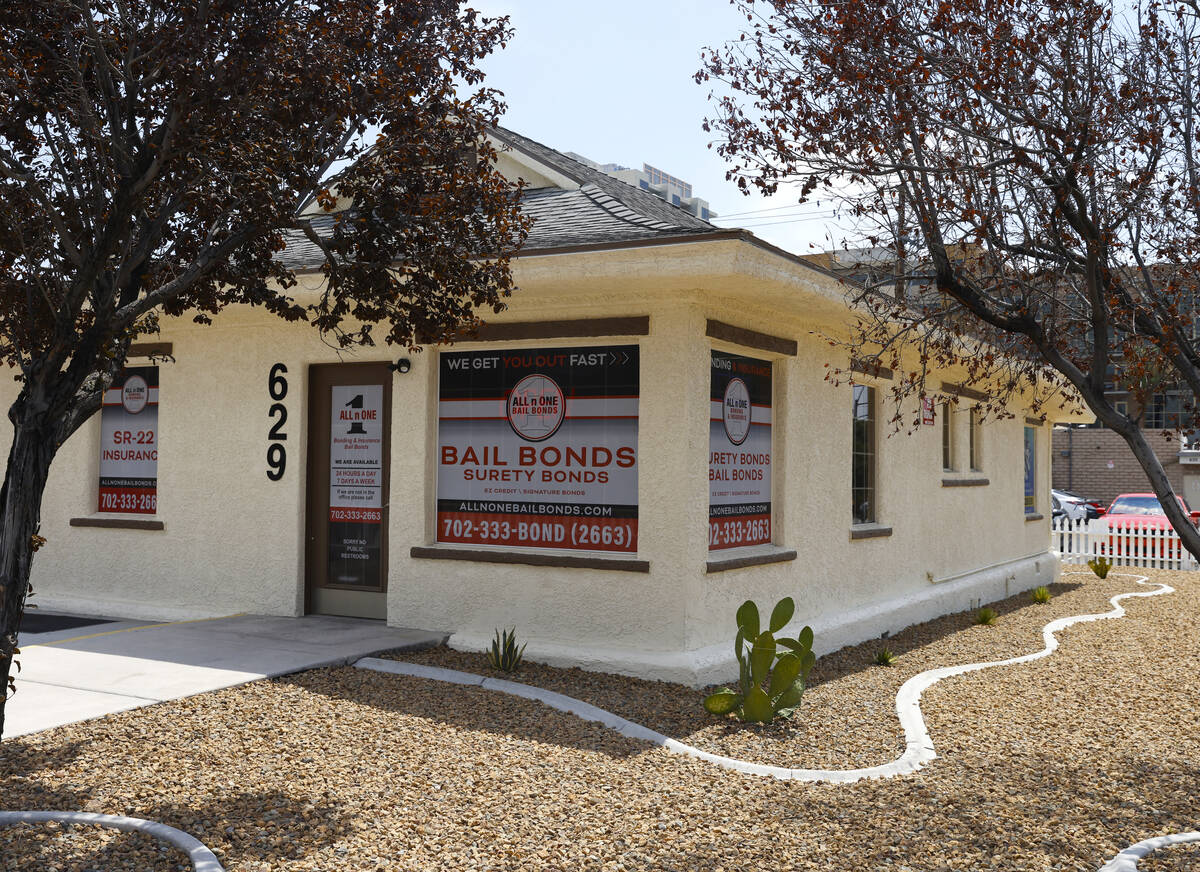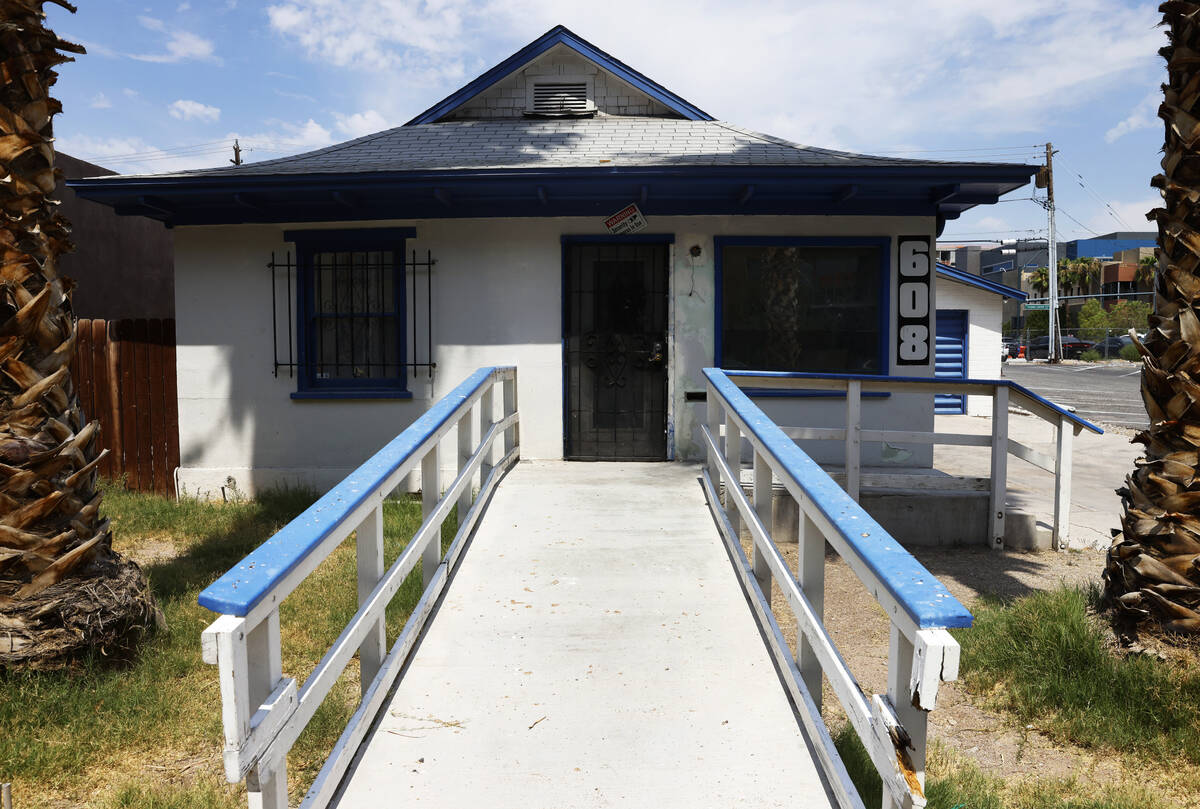Here’s the story of the oldest houses left in Las Vegas
The old stucco houses on Casino Center Boulevard and Third Street downtown don’t seem particularly distinguished at first glance.
One, with a mix of dirty and boarded windows, looks forlorn. The other is a simple, one story bail bonds office. There’s no plaque to mark them and nothing to indicate that they have any historical significance.
But these buildings are special, according to historians, because they’re the oldest houses in Las Vegas, not counting the Mormon Fort, built in 1855 on what’s now Washington Avenue. They’re called railroad cottages and were constructed between 1909 and 1911 by the San Pedro, Los Angeles and Salt Lake Railroad as housing for the company’s workers.
They represent some of the last physical remnants of the railroad, which dominated the early days of Las Vegas and drove the fledgling town’s growth through an auction of property.
And their creation showed a long-term commitment to Las Vegas as a permanent community, not just a boom town, said Mark Hall-Patton, retired Clark County Museum administrator. The development bookends the start of Clark County in 1909 and the incorporation of Las Vegas in 1911.
“It speaks to the origins of Las Vegas,” he said.
Hall-Patton said there were originally 64 cottages covering three blocks on Second Street, which became Casino Center, and Third Street. They were built from “cookie cutter designs,” he said, with two and three bedroom versions.
In a 1986 story, the Las Vegas Review-Journal reported that the cottages cost almost $110,000 in total to build.
The development was the first subdivision in Las Vegas, Hall-Patton said, and one of the first in the country where all the homes were identical.
Before the cottages, railroad workers lived in tent houses with wooden platforms and side walls that were just three feet tall, he said. Tents sat on top. There was even a tent hotel downtown.
Lumber could be expensive and difficult to find in the desert, so the homes were made out of concrete, with half-size cinder blocks created on-site from railroad molds with local sand, he said. Even the window sills were concrete.
There were other practical reasons for using concrete. Hall-Patton said it was a material that would stay cooler in the summer and warmer in the winter.
The houses didn’t completely protect their occupants from the desert climate, though.
George Garner, who was born in 1923 and grew up in two of the cottages, said that his family slept on the porch in summer and in the living room in winter when it was too cold to use the bedrooms, according to a 2005 Review-Journal story.
The homes became threatened as downtown shifted from residential to commercial. UNLV history professor Michael Green said that in the 1950s, people across the nation moved away from downtowns. In Las Vegas’ past, preservation wasn’t a priority, he said.
By 1985, only about 35 cottages were left, the Review-Journal reported. Today, the number that exist is uncertain.
Hall-Patton said he could only find two on a recent visit. Green said he thought three or four were still downtown.
A few have been transplanted and preserved. One is at the county museum in Henderson. Four are at Springs Preserve.
Jason Flangas, who said his family owns the cottage at 608 Third St. through an LLC, didn’t know it was one of the oldest houses in Las Vegas.
“That’s kind of cool, bro,” he said.
Leo Flangas said the house is vacant, but will be an office for a contractor once they get a permit.
Senior U.S. District Judge Kent Dawson, who said the cottage at 629 Casino Center is part of his parents’ estate, was aware of the property’s historical significance. He said his family had no plans for its future, but was proud to have maintained it.
Bail bondsman Andy Renshaw, who has an office in the house, said he was proud of it too.
“I brag about it all the time,” he said.
He uses the house to put his clients at ease. When a criminal defendant comes in and seems nervous, he said, he tells them about its history.
Contact Noble Brigham at nbrigham@reviewjournal.com. Follow @BrighamNoble on X.



